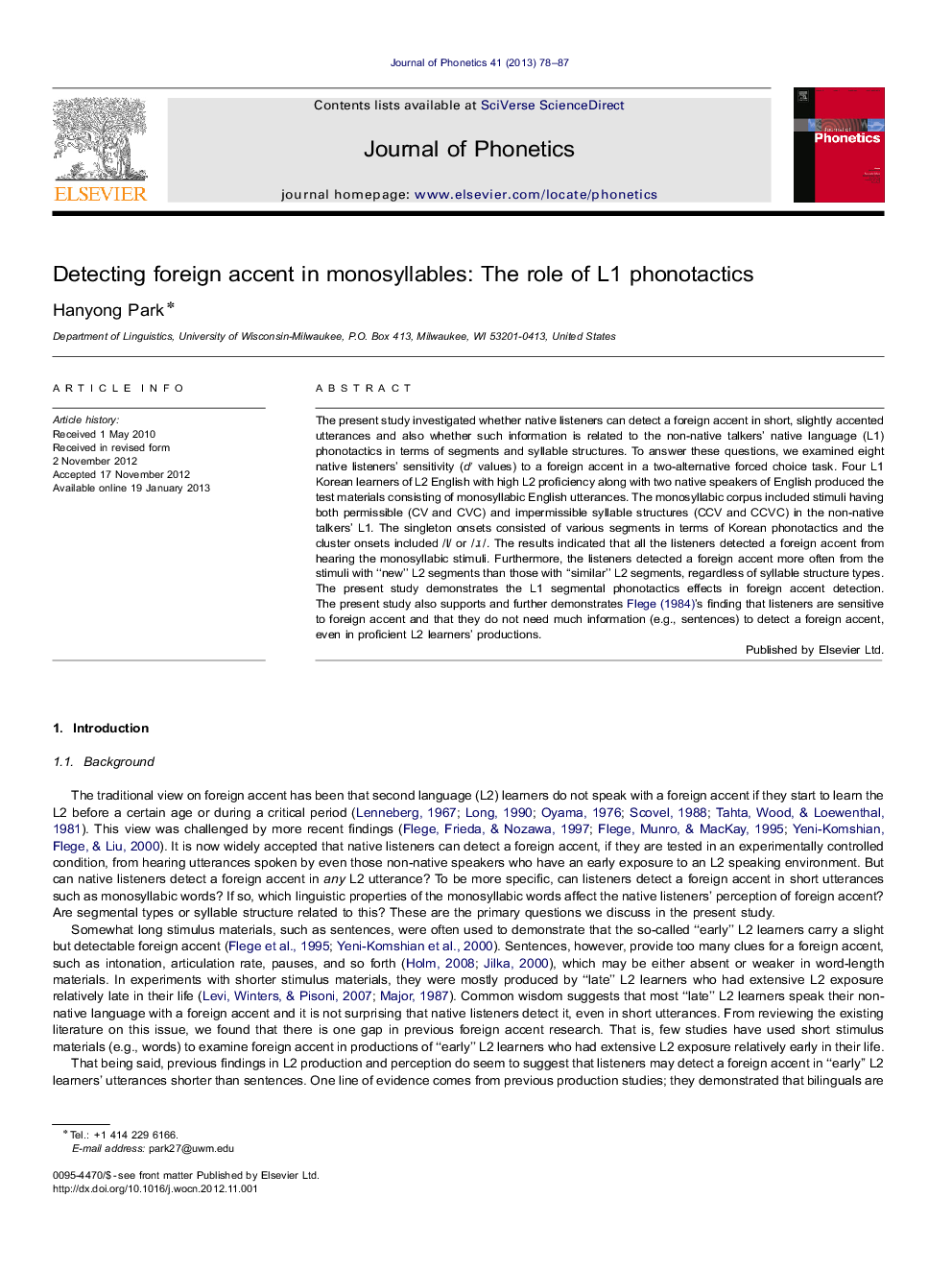| Article ID | Journal | Published Year | Pages | File Type |
|---|---|---|---|---|
| 1100944 | Journal of Phonetics | 2013 | 10 Pages |
The present study investigated whether native listeners can detect a foreign accent in short, slightly accented utterances and also whether such information is related to the non-native talkers' native language (L1) phonotactics in terms of segments and syllable structures. To answer these questions, we examined eight native listeners' sensitivity (d′ values) to a foreign accent in a two-alternative forced choice task. Four L1 Korean learners of L2 English with high L2 proficiency along with two native speakers of English produced the test materials consisting of monosyllabic English utterances. The monosyllabic corpus included stimuli having both permissible (CV and CVC) and impermissible syllable structures (CCV and CCVC) in the non-native talkers' L1. The singleton onsets consisted of various segments in terms of Korean phonotactics and the cluster onsets included /l/ or /ɹ/. The results indicated that all the listeners detected a foreign accent from hearing the monosyllabic stimuli. Furthermore, the listeners detected a foreign accent more often from the stimuli with “new” L2 segments than those with “similar” L2 segments, regardless of syllable structure types. The present study demonstrates the L1 segmental phonotactics effects in foreign accent detection. The present study also supports and further demonstrates Flege (1984)'s finding that listeners are sensitive to foreign accent and that they do not need much information (e.g., sentences) to detect a foreign accent, even in proficient L2 learners' productions.
► We examined native English listeners' sensitivity to a foreign accent in a 2AFC task. ► Listeners could detect a foreign accent from hearing monosyllabic utterances. ► The results show coda and onset effects but not a syllable structure effect.
